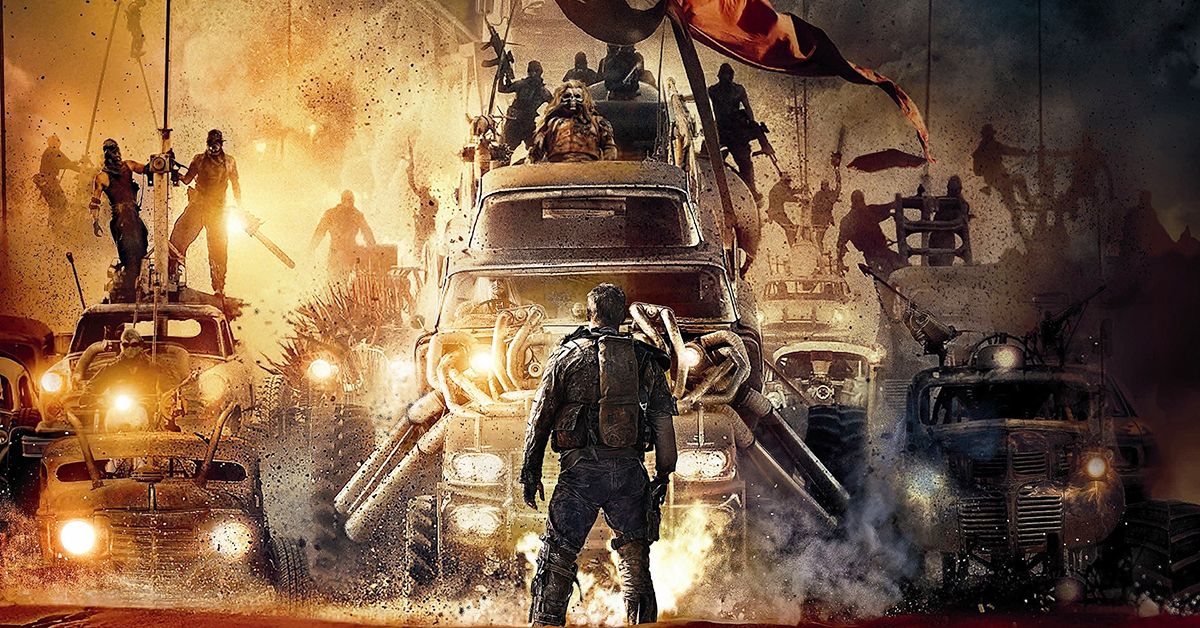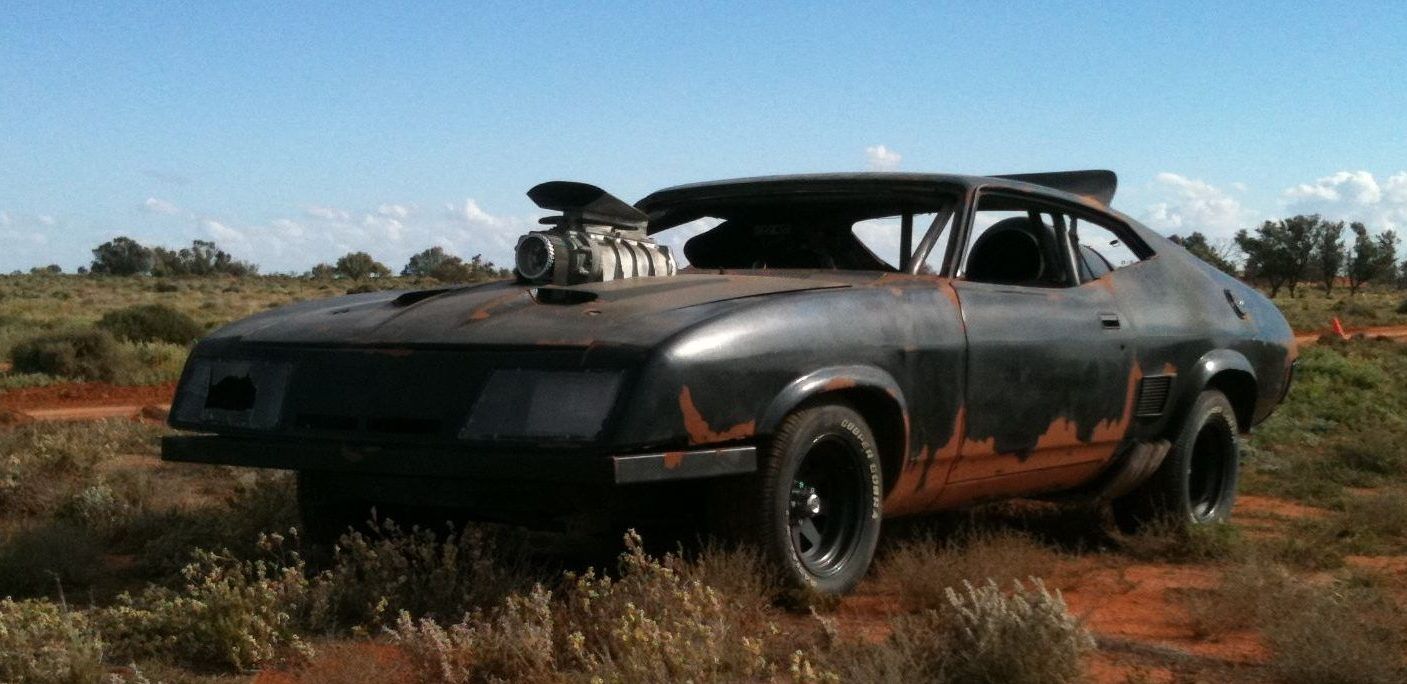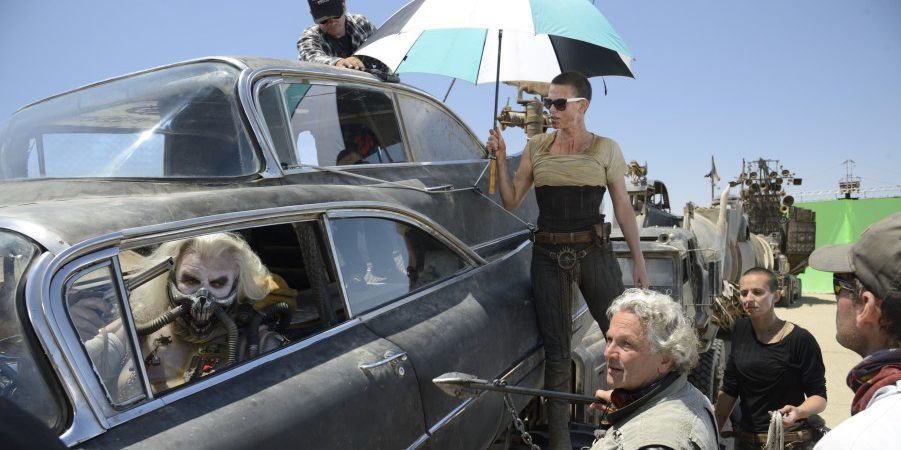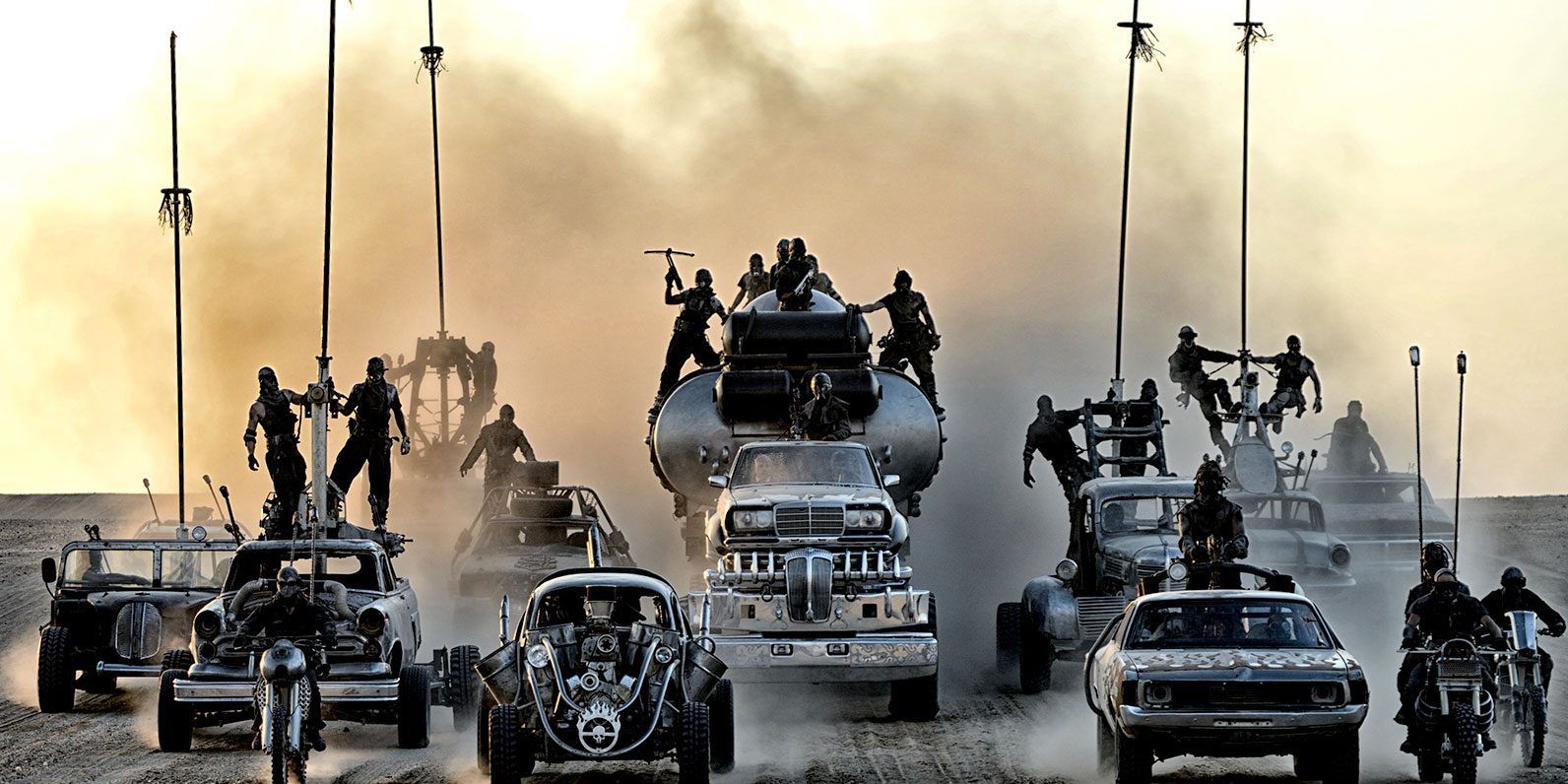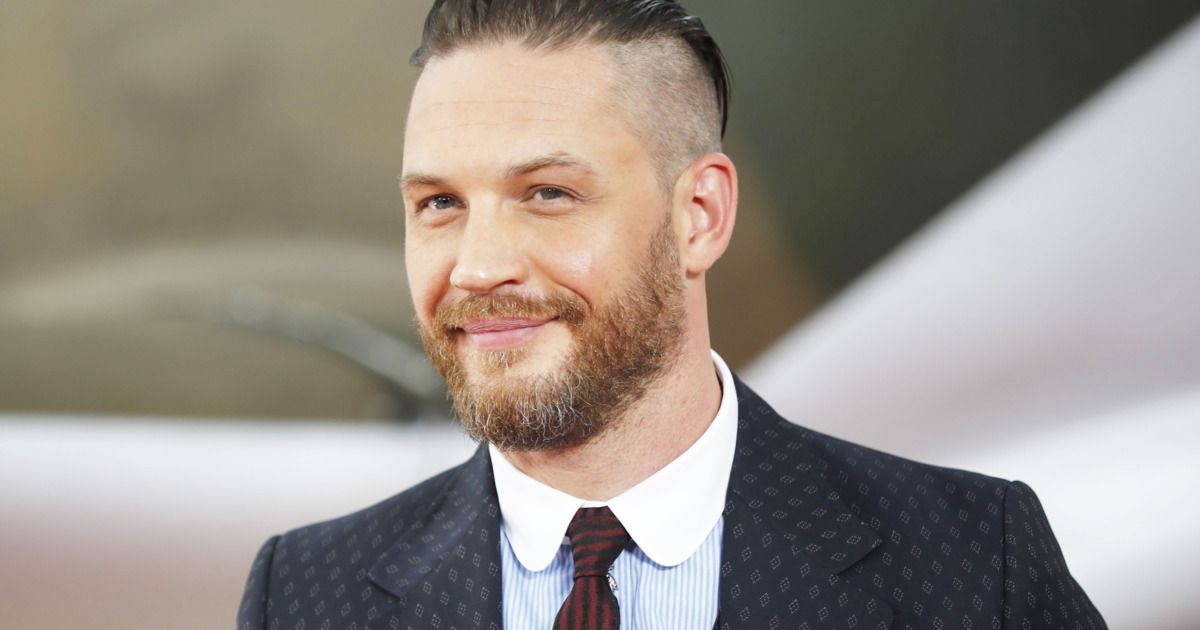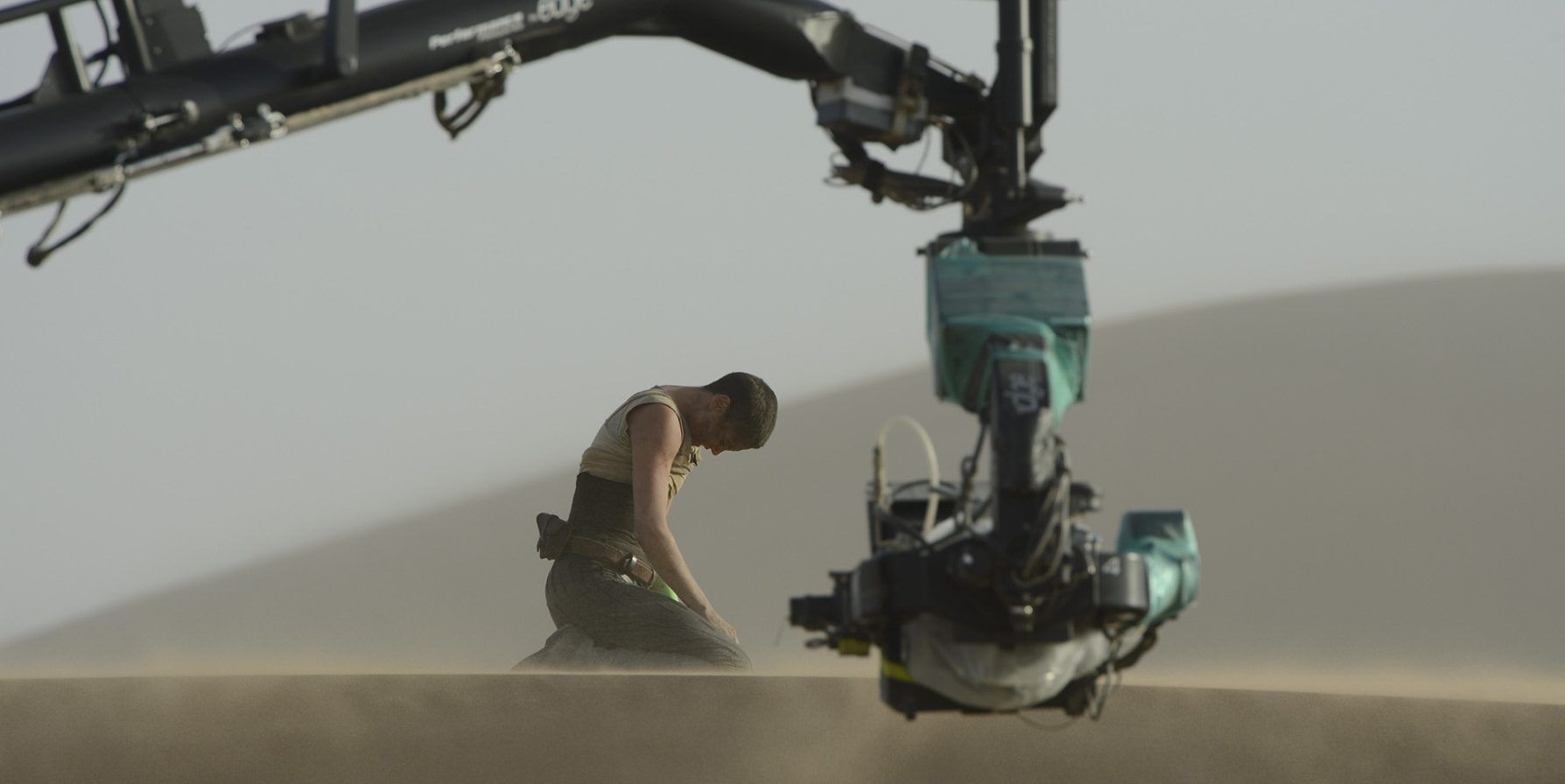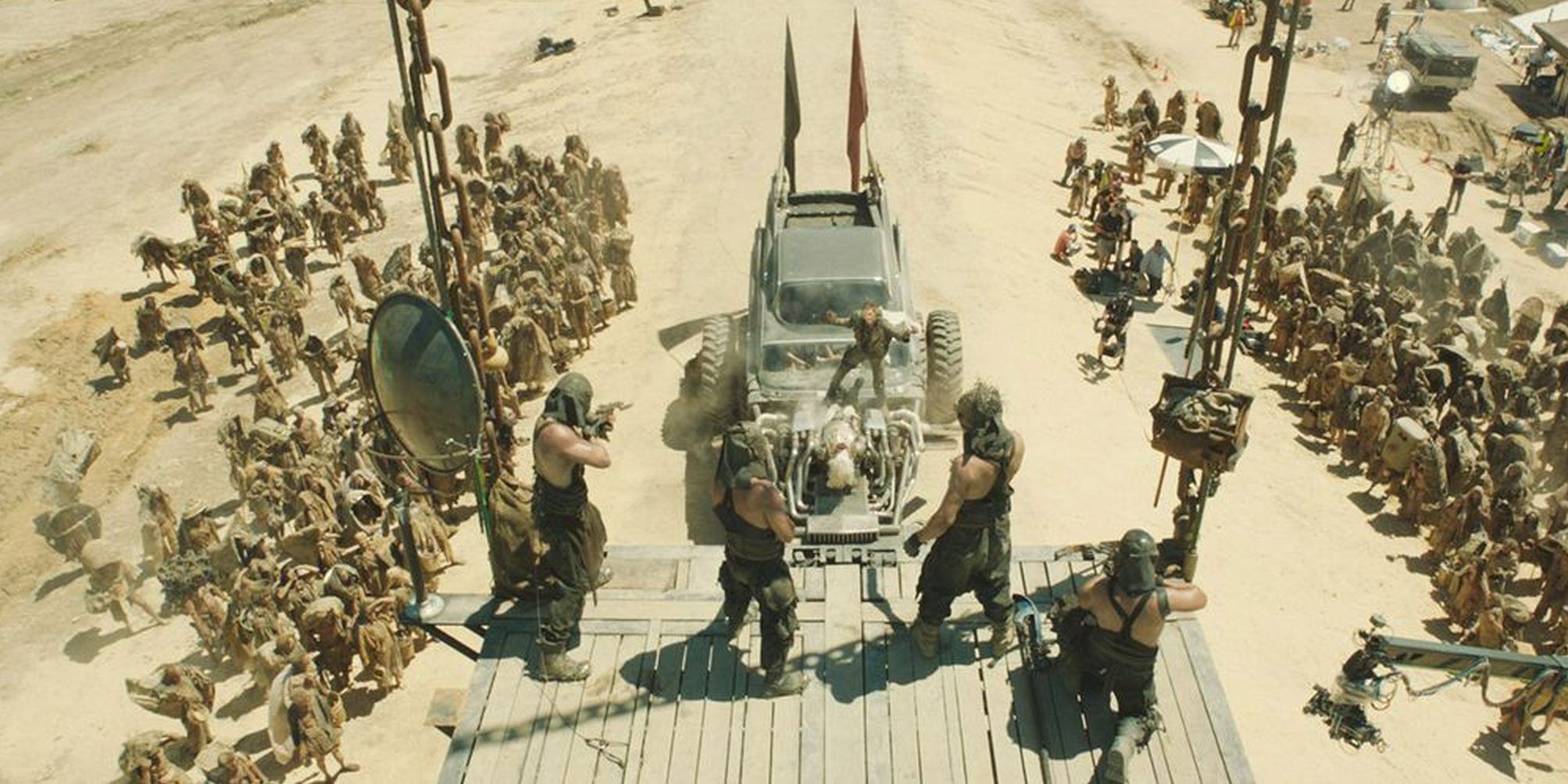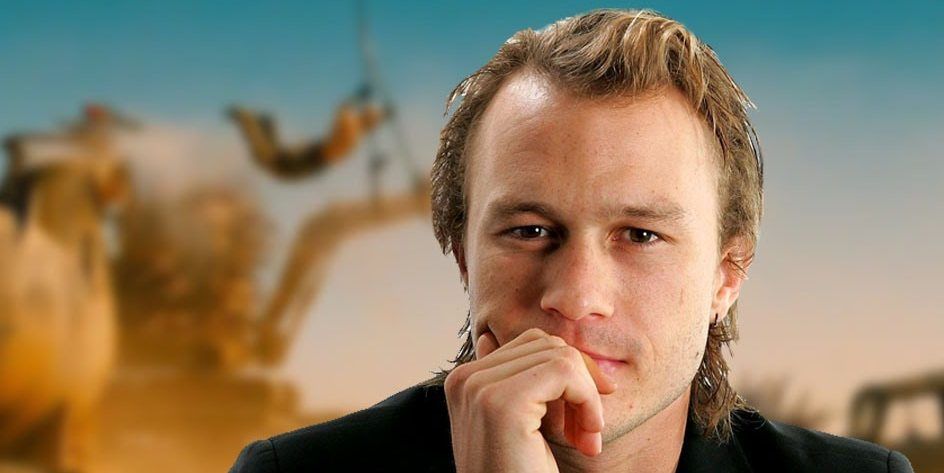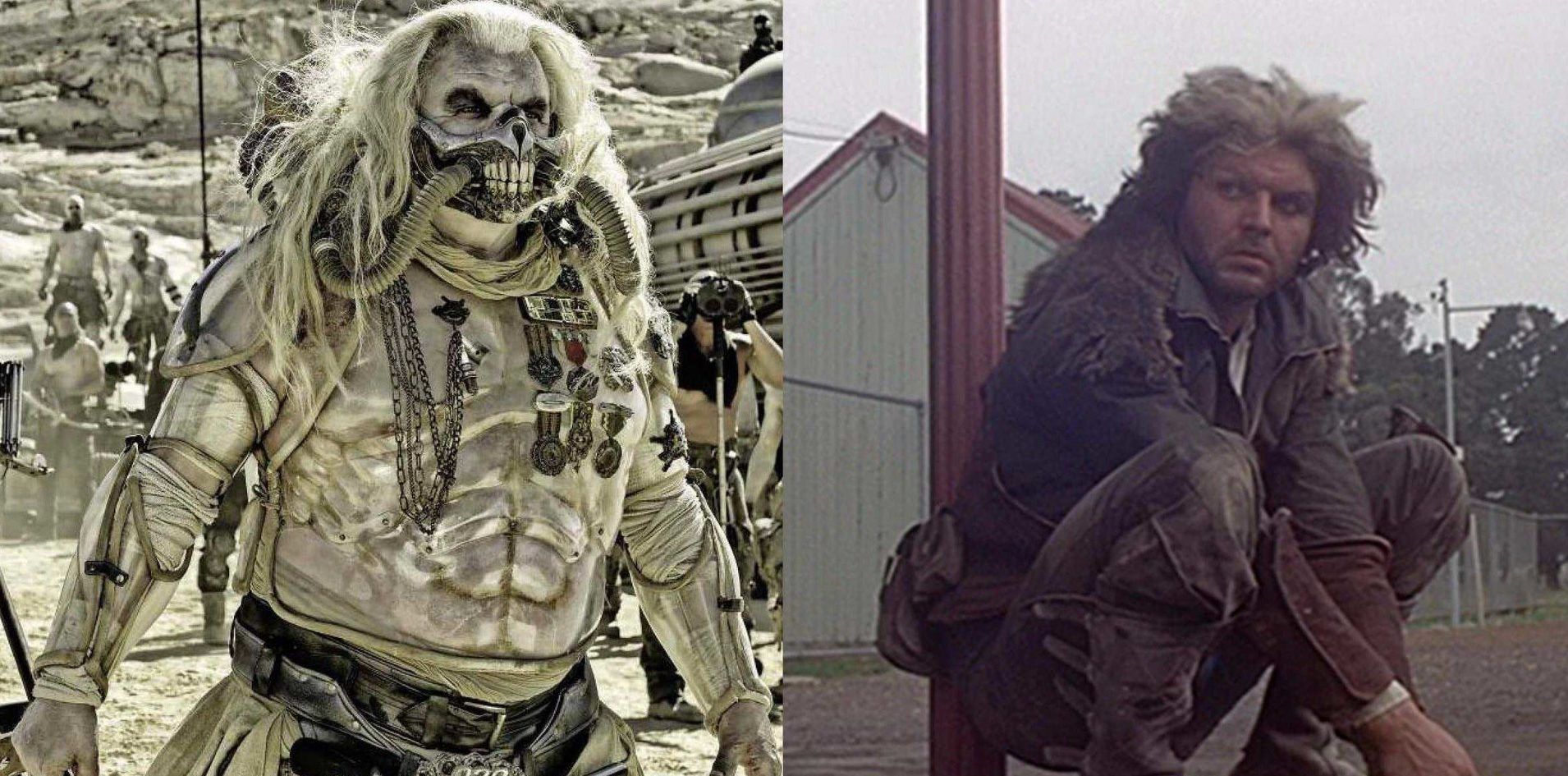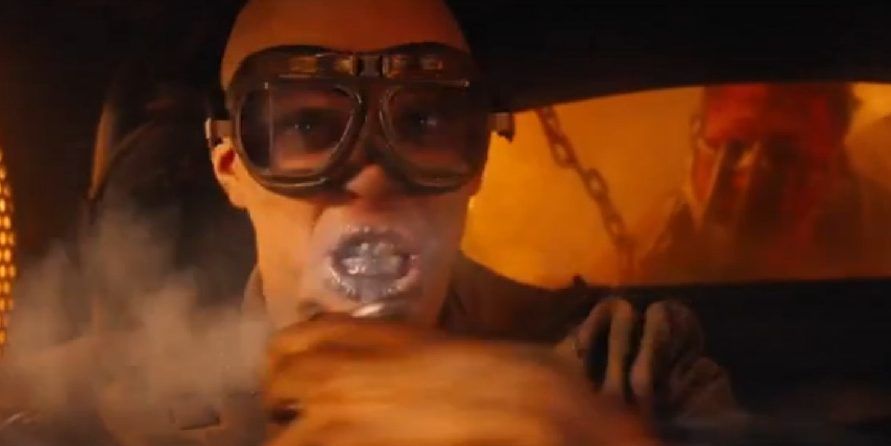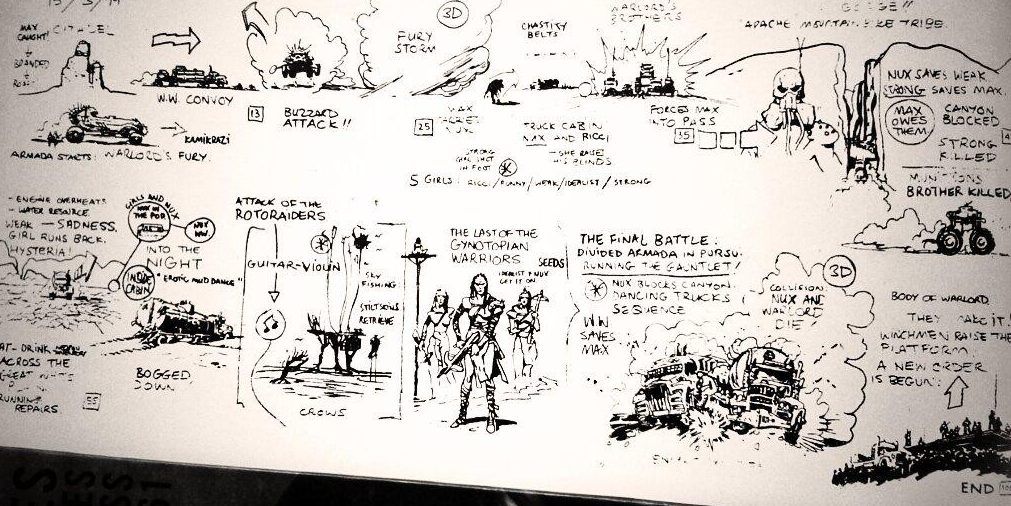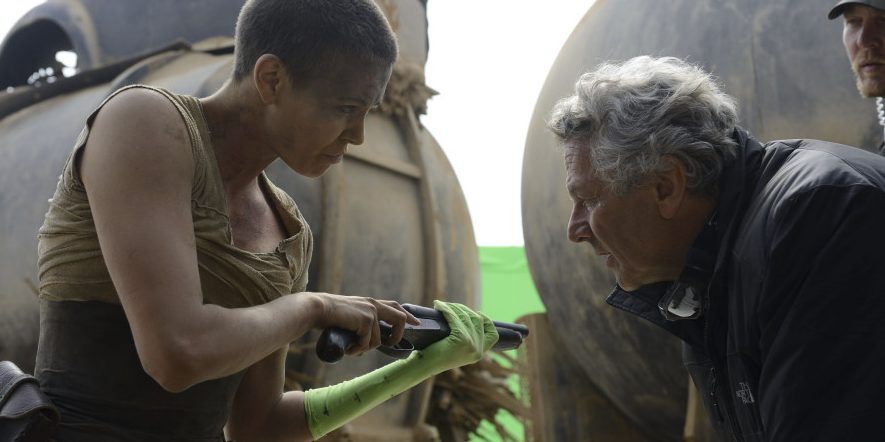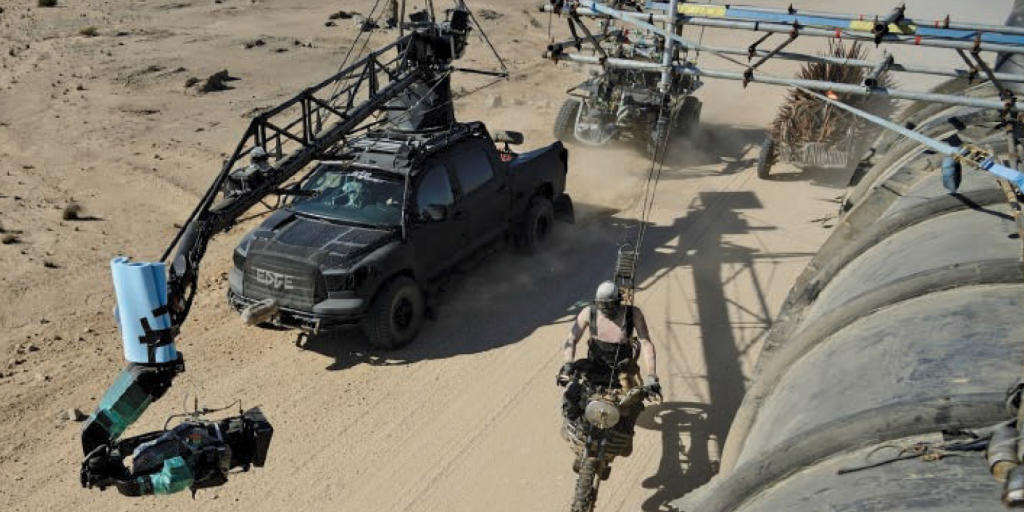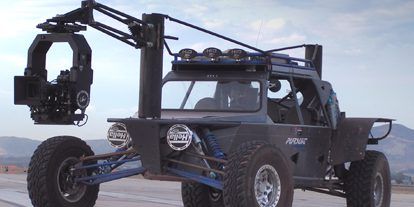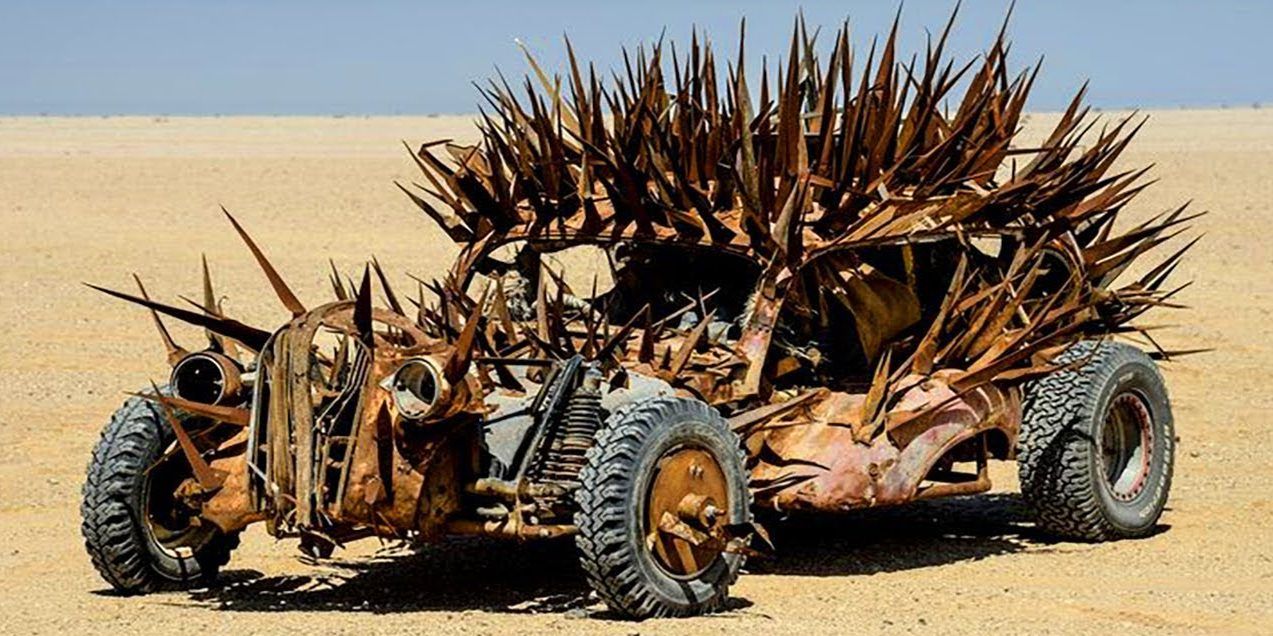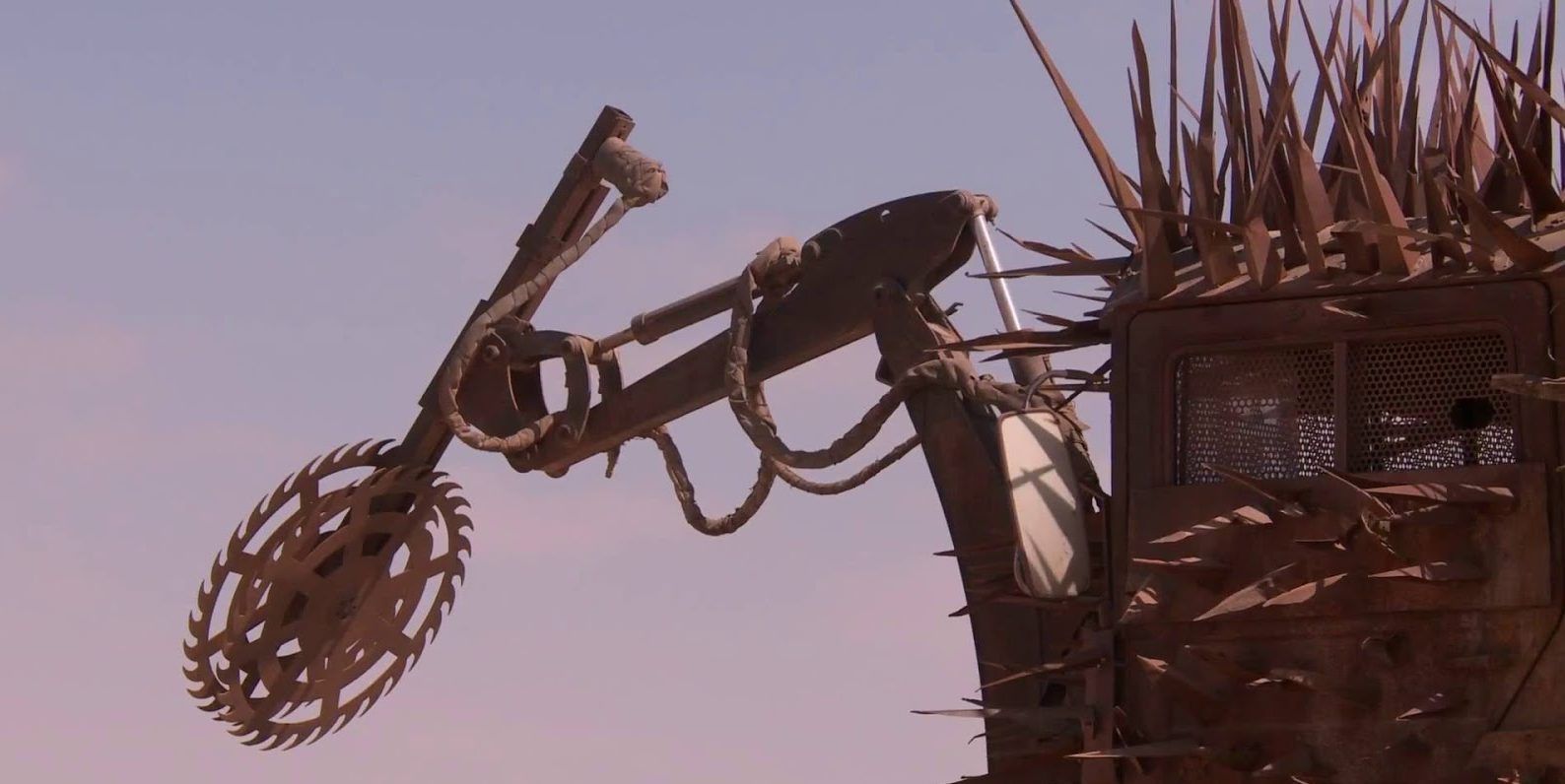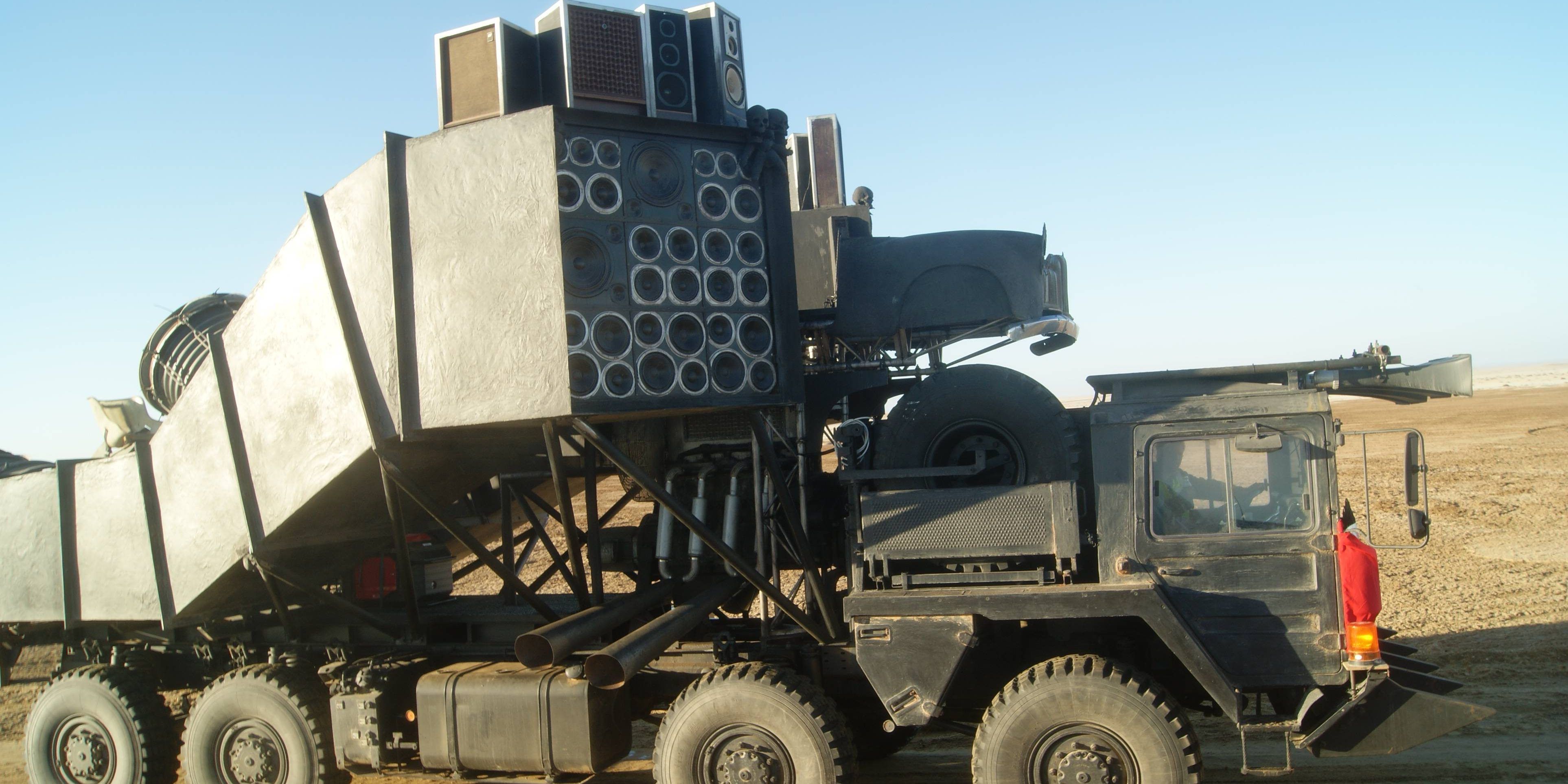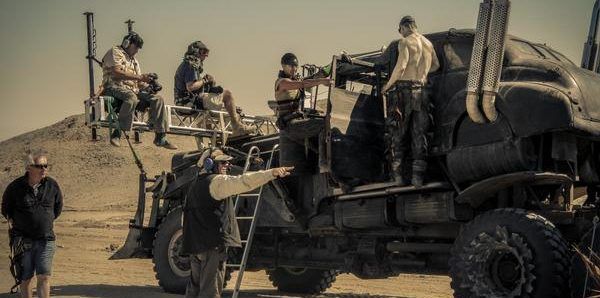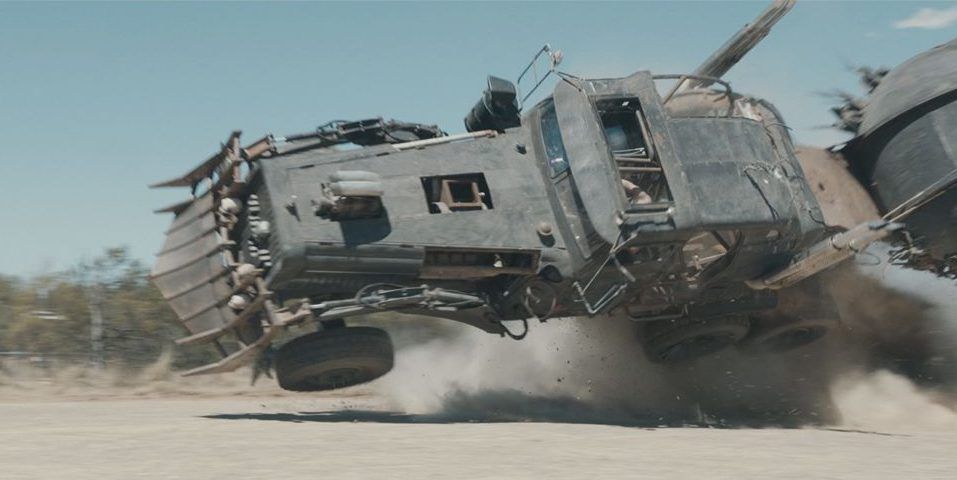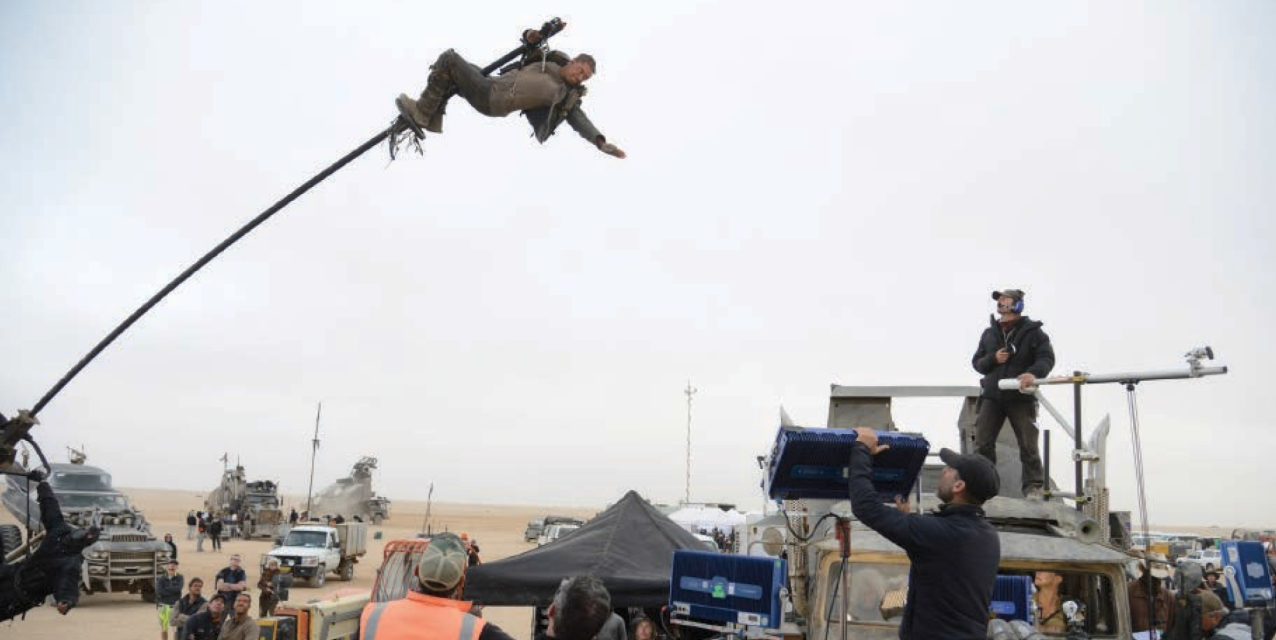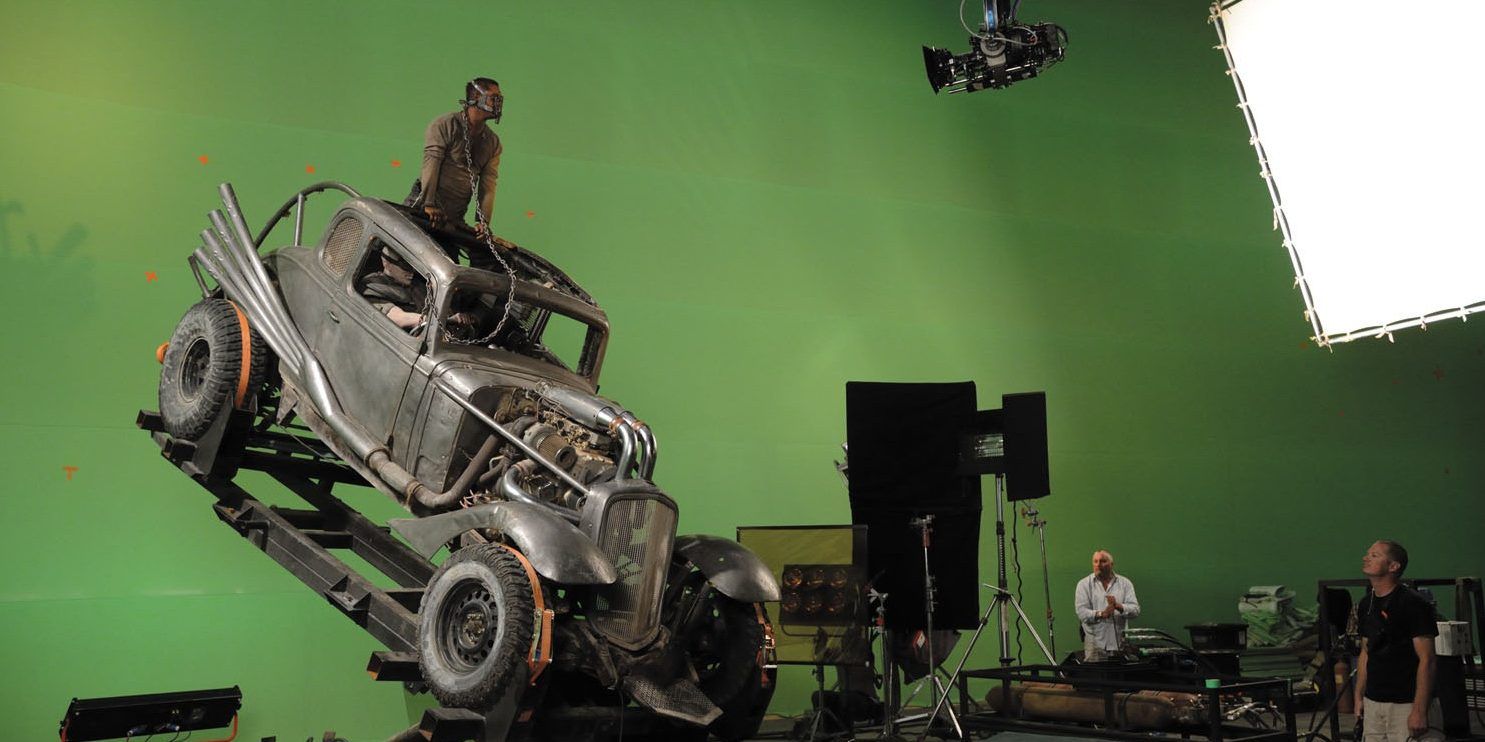Mad Max: Fury Road hit theaters in 2015 and caused an immediate cultural sensation. Even though the movie was an all-out, insane action movie, its narrative power, strong characters, and surprisingly intricate plot paired with a unique aesthetic to earn the film ten Academy Award nominations including Best Picture and Best Director. With top-billed Tom Hardy starring as Max Rockatansky, Fury Road nonetheless subverted expectations by focusing almost entirely on a group of desperate women, led by Charlize Theron as Imperator Furiosa, trying to escape from the grips of a cruel tyrant, Immortan Joe. Hardy had barely any spoken lines in the film, which centrally featured one extended, groundbreaking chase scene.
Updated 2022: If you're a fan of the Mad Max franchise, you'll be happy to know that we've updated this article with more details surrounding the things that actually happened behind the scenes of Mad Max: Fury Road.
Fury Road eventually won six Academy Awards, thanks to impressive work by cast and crew to create the post-apocalyptic mood and accomplish impressive realism throughout a series of artistically shot and executed stunts. Director George Miller spent the time after the first Mad Max films, which proved immensely successful and helped to launch the superstar career of the original Max, Mel Gibson, making films like Babe and Happy Feet, but the whole time, the idea of a new installment in the franchise was swirling around in his head. But the long development process of Fury Road created a swirl of rumors surrounding cast, production, and especially around the vision of Australian director George Miller. Extended filming for the movie didn't help to squash the rumors, though an impressive series of trailers buoyed audience anticipation, and Fury Road ended up as the highest-grossing Mad Max film, and has cemented its place as one of the greatest action movies of all time. Keep scrolling for 20 behind the scenes facts which contributed to the wild myths surrounding an even wilder movie, Mad Max: Fury Road.
20 Concept Development Began In 1998
Mad Max: Fury Road was originally set to be filmed in Broken Hill, Australia - the same dry desert location that provided stark backgrounds for the first film in the series. But after years and years of development, just before filming was supposed to begin, Broken Hill received its first rain fall in 18 years, more than half the time since the first movie's release in 1979.
Following the rain storm, desert flowers sprouted across the sand, which didn't quite fit into director George Miller's picture of the new film's aesthetic. New filming locations were quickly chosen, and the majority of Fury Road was actually filmed in the remote deserts of Namibia, located in Southwest Africa.
19 120 Days In The Desert
Principle filming for Mad Max: Fury Road began on June 26, 2012, and would continue for a mind-boggling 120 days. Cast and crew had to be ready at any time, as stunts, chases, and close-up shots could be filmed at any time. The weather wasn't as harsh as it could have been, however, as the Namib desert lies relatively close to the Atlantic coast.
Located in the southern hemisphere, Namibia's seasons are opposite the northern hemisphere, so the filming took place without the piercing heat of an African summer, in which temperatures can easily reach more than 100 degrees Fahrenheit.
18 150 Hand-Built Cars
Of course, Mad Max: Fury Road took the apocalyptically stylized cars of the franchise's first three films and doubled down on aggressive bodywork, insane engine combinations, and even motorcycles, excavators, and dune buggies. All told, the film required 150 hand-built cars, which were the brain children of production designer Colin Gibson, a longtime collaborator of George Miller's whose other credits include the Babe and Happy Feet films (no relation to Mel Gibson, however).
The hot rod look spawned from early Fury Road storyboards, and construction of all the vehicles began as early as 2003, more than nine years before filming would begin and 12 years before the film's eventual release.
17 Environmental Concerns
Many of the cars and trucks built for Mad Max: Fury Road ended up in hectic crashes or explosions, much of which was accomplished without the use of extensive computer-aided graphics. But all the fuel necessary to both drive the hot-rodded prop cars and to blow them up led the Namibian government and environmental groups to grow concerned about the impact of the film on the desert environment.
According to British news source, The Guardian, an environmental report accused the filmmaker and his crew of damaging "sensitive areas meant to be protected," as well as "endangering reptiles and rare cacti."
16 Back To The Desert
After the first 120 days of principle filming, George Miller and his team left Africa to return to the studio for edits, post-production, and graphic additions, but the film just didn't match perfectly with the image in the visionary director's head.
To get everything perfectly synced, from story continuity to aesthetic cohesion, Miller assembled the primary cast for another three weeks of filming one year later. The final shots resulted in a film that, despite its fantastical elements, apocalyptic imagery, and extreme action stunts, feels real and makes sense, thanks to a total of 138 days spent filming in the desert.
15 One Thousand People On Set
Even without including the environmental impact of all the explosions, cars, trucks, and motorcycles blasting around the desert, back and forth, creating havoc, the effects of just bringing the entire crew must have caused major problems for desert critters.
All told, more than 1,700 crew members worked or acted (as stars or extras) on Mad Max: Fury Road, and on any average day, around 1,000 people would be on set. For the widest angle shots featuring crowds of extras, almost the entire crew was required to work and act for the shots to come out looking sufficiently realistic.
14 Heath Ledger As Max Rockatansky
Even though Tom Hardy has become one of the world's biggest movie stars in the last few years, thanks to roles like Mad Max, as well as critical scenes in a series of Christopher Nolan blockbusters including The Dark Knight Rises, Inception, and Dunkirk, he was not director George Miller's first choice to play Max Rockantansky in Fury Road.
In fact, another actor who played a villain in Nolan's Dark Knight franchise, Miller's fellow Australian Heath Ledger was the original casting choice. Ledger's death by overdose in 2008, when The Dark Knight was wrapping up, led to the eventual choice of Tom Hardy, who in the intervening years had grown to sufficient stardom.
13 Immortan Joe Was Toecutter
The villain Immortan Joe provided plenty of emotional impact in Fury Road, controlling access to water (or aqua-cola), vegetables (produce), the means of violence (via the bullet farm), and his beautiful wives - who along with Charlize Theron's Imperator Furious set off the main plot of the film. But the actor behind the mask was no newbie to the Mad Max film series.
In fact, Hugh Keays-Byrne played the main antagonist in the first Mad Max, as Toecutter all the way back in 1979. The two characters, though played by the same actor, were not intended to be related in any way, since Toecutter died by being run over by a tractor trailer at the end of the first film.
12 Witness Me!
One of Mad Max: Fury Road's most recognizable quotes occurs many times in the film, when War Boys decide to sacrifice themselves to accomplish Immortan Joe's goals. Immortan Joe brainwashed the War Boys with sufficient mythical tone that they believe their glorious death will both inspire their compatriots while delivering them to a glorious afterlife in Valhalla.
Just before they sacrifice themselves, they yell, "Witness Me!" and spray their mouths with chrome paint - but that kind of poisonous treatment wouldn't work for the actors who certainly weren't about to sacrifice their lives for the point of the film. Instead, the spray they used was made for cake decorating.
11 No Script On Set?
One of the rumors that flew around Hollywood to justify the seemingly interminable production process that came to define Mad Max: Fury Road was that director George Miller had taken his film crew and actors to the desert without even bringing a script.
In an interview, Charlize Theron told Gizmodo: "Well, I feel like us actors kind of set out this rumor that there was no script. I wonder, I haven’t talked to George about, but I wonder if he’s upset about it. Because there was a script; it just wasn’t a conventional script, in the sense that we kind of know scripts with scene numbers. Initially it was just a storyboard, and we worked off that storyboard for almost three years."
10 Imperator Furiosa's Arm
Much of Mad Max: Fury Road's impact can be attributed to just how realistic the intense action scenes in the film appear - even on today's high resolution TV and movie theater screens. But one aspect of the film just couldn't be pulled off without a little help from computer animation: Charlize Theron's missing forearm.
For much of the filming, Theron wore a green glove while acting as Imperator Furiosa. Sometimes it was expected that her metal and leather hand contraption would be added on completely in post-production, but sometimes she also wore a prop on top of the green glove itself.
9 Camera Tricks With Camera Trucks
Capturing all the spectacular action that makes up the majority of Mad Max: Fury Road took some ingenuity and skill, and required some seriously hardcore hardware, as well. Many of the scenes were filmed with cars, trucks, and motorcycles driving full speed through the desert, as stunt men leapt, swung, and flew through the air.
And what made Fury Road so great was the realistic action as captured from seemingly impossible angles. What made those impossible angles possible was the Edge Arm, a camera mounted on a long boom, itself mounted onto a modified Ford pickup truck with a supercharged V8 engine under the hood that allowed it to keep up with the high speed chases.
8 Edge Buggies
Complementing the Edge Arm pickup truck were two more products from Edge Products, two Barracuda Mk II Off Road camera systems. The Barracudas allowed for multiple camera angles during the complex choreography of swarming War Boys crashing in on the War Rig, Made Max, the Brides, and Imperator Furiosa.
While not as large or powerful, and with less reach than the Ford pickup Edge Arm, the buggies proved an integral part of the Fury Road team, and helped to keep scenes from having to be shot multiple times - improving overall continuity while helping to keep the time that the whole cast and crew had to spend in the desert to a minimum.
7 Spiky Buzzard
One of the first vicious gangs that Imperator Furiosa has to deal with at the beginning of the chase scenes on the way to the mythical Green Place in Mad Max: Fury Road is the Buzzards, a lowly band that drives a series of buggies and trucks fully decked out with dangerous spikes.
The design conception for the Buzzards' dune buggies came from spiky lizard species that populate the Australian Outback. Over 5,000 spikes were used to create the Buzzards fleet, and production development began all the way back in 1999 as artists Brendan McCarthy and Peter Pound shared concepts until building began in 2003.
6 A Saw Is Not Enough
While the Buzzards' dune buggies drew much of the attention from the warriors on the War Rig, the Buzzard Excavator crept up from behind and posed a major problem thanks to its armor, extensive spikes, and a huge saw attached to the end of its pneumatic arm.
A little-known fact is that the Buzzard Excavator featured exactly 1,757 spikes on its own (more than 35% of the total spikes on the whole fleet), a number purposefully chosen to match the number quills on an echidna, a relative of the platypus that lays eggs and is commonly known as a spiny anteater.
5 Desert Transportation Logistics
Moving all the cast, crew, gear, and props that made up the massive set for Mad Max: Fury Road required some serious hardware to complement the wide range of vehicles that are seen in the film itself.
To accomplish the incredible logistical feat, Miller and his crew used five German military transport trucks with 8x8 drivetrain, which spent their entire days hauling gear across distances longer than three football fields, up to six times a day for the entire 138 day stretch of filming. In some cases, the transport trucks even served double duty, holding up props to the correct height for close up shots.
4 The War Rig
The Mad Max franchise has always featured impressive vehicles that emphasize the cobbled-together reality that dominates the post-apocalyptic world. But from Mel Gibson's V8 Interceptor (based on a Ford Falcon coupe) in the first film to the wide range of hot rods, V8s, and tractor trailers of Fury Road, nothing is quite as impressive as the War Rig, stolen from Immortan Joe by Imperator Furiosa.
The huge truck is a mashup between a Czechoslovakian Tatra and a Chevrolet Fleetmaster, with two V8s under the hood powering six wheels of the enormous 18-wheel truck (complete with gas pod towed at the rear).
3 Flipping The War Rig
Of all the complex stunts and insane shots that populate Mad Max: Fury Road, the most difficult came at the end, when the script (or storyboard) called for flipping the War Rig.
George Miller revealed to Top Gear that, "The most difficult stunt – in terms of pulling it off – was when the War Rig rolls at the end [of the film]. Initially we started off that stunt, and I said, ‘There’s no way we’re putting a human in that vehicle’. But CG didn’t make sense in a movie in which everything is real. We looked at models, but that would look hokey. Then we looked at a remote-control War Rig, but we couldn’t get it…[he makes a precise steering-wheel-gesture] on the spot. So we did it for real. That involved flipping a giant truck between two massive rocks, to land in front of a high-speed camera shooting 1000 frames per second… in one take. “
2 Fishing For Humans
An iconic shot from Mad Max: Fury Road occurs multiple times in the film, when a series of stuntmen on poles grab their victims or swing around chainsaws from heights of twenty feet or more. Those scenes weren't done in front of a green screen, however, they were performed on set, at full speed.
Miller described the process of figuring out just how to make the shots look realistic, given the difficulties of swinging an actor around twenty feet in the air, saying, “Initially I thought they’d be done in CG, but one day I looked up, and they’d figured out the pendulum of the guys, using car engines as a weight at the bottom.”
1 George Miller Drives A Hybrid
Fans of the entire Mad Max franchise would certainly have to be forgiven for thinking that director and visionary George Miller was a gearhead himself. Even while Fury Road inspired a renewed dedication to steampunk and hotrodding in the general public, keep in mind that Miller also directed wholesome, family-friendly films like Babe and Happy Feet.
And in fact, in real life, Miller admitted his own leanings to Top Gear, saying, “So I shouldn’t really say this, but I drive a hybrid Lexus. I’m not a huge petrolhead, but I make sure I surround myself with total freaks who are.”
Sources: topgear.com, indiewire.com, and madmax.wikia.com

